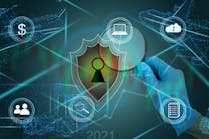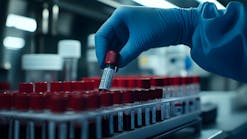Monitoring and maintaining critical equipment and specimens in the clinical laboratory is an essential responsibility of all lab managers. Equipment such as refrigerators, freezers, stability chambers and more require constant temperature monitoring. Temperature fluctuation can lead to incorrect or inconsistent test results that can have dangerous consequences. Monitoring temperature carefully has regulatory implications, and most crucially it has implications for patient care.
Some laboratories choose to manually monitor their equipment. Manual monitoring is often work-intensive. The lab staff spends a considerable portion of the day taking and recording temperature, humidity, and other environmental parameters. Charts and logs need to be collected, reviewed, filed, and stored for future audits. This process requires a significant amount of time, energy, and space and comes with a substantial price tag.
More and more labs are finding that an easier, more dependable, and more economical way to monitor critical equipment and patient specimens is through the use of an automated temperature monitoring system. Automated monitoring minimizes risk. A computerized system increases accuracy by providing continuous monitoring, centralized data collection, and simplified reporting.
Automated monitoring also is advantageous when laboratories are audited. Handling an audit successfully can be a smoother process when pre-formatted reports enable quick access to proper documentation. Meeting compliance for FDA, AABB, Joint Commission, Clinical Laboratory Management Association (CLMA), Good Laboratory Practice (GLP), and other regulatory bodies is made simple with an automated monitoring system. Also, automation permits staff to focus on other critical tasks, and lets them respond to workplace demands.
Choosing the right automated monitoring system for your facility, however, can be a daunting task. With so many companies offering similar solutions, the choice can be difficult. Making allowances for specific needs related to lab functions, there are key factors that all lab managers should take into consideration when shopping for an automated monitoring system for their facility. These include flexibility, robust alarm capabilities, customized programming, comprehensive reporting and documentation, a detailed validation plan, and, increasingly, the ability to access the system from a smartphone. Regional or local customer service and support also are key factors to ensuring lasting success.
In addition, savvy labs gravitate toward systems that not only fit their needs in the present, but are likely to do so in the future. One important consideration is flexibility: the automated system should be constituted so that it can add on more equipment, monitor different aspects, or, if the laboratory decides to relocate, accommodate different locations. The system ought to expand with the facility as the facility grows.
Centralized alarm notification is also a valuable aspect to look for in a good automated monitoring system. An alarm should only go off when equipment is in question. Alarming notification should signal staff via text, phone, or email with all the important input information when the temperature changes in a unit. All input information, such as input number, input name, current reading, and low and high limit, should be present in the message. The alarm may go off when the staff is present at the laboratory, or it may go off when they’re at home. Depending on the nature of the alarm, an ideal solution should provide the laboratory staff with the ability to respond remotely.
A sophisticated system will also allow laboratorians to departmentalize and decentralize the system according to their needs. User access levels should be set based on an individual’s position, department, and/or qualifications. This will allow users to view only their own inputs on floor plans, reports, graphs, etc. Separate departments should be able to share a system but still handle their own alarms, generate their own reports, and use their own standard operating procedures.
Every facility has different requirements and needs that the reports and graphs should reflect. Regulatory agencies such as the FDA and Joint Commission have a big impact in determining what data should be kept, for how long, and in what format. Recording information such as readings, alarms, and program changes provides a thorough picture of, what, who, how, and why. Laboratory staff should be able to access the reports and graphs from any workstation, and they should have the ability to create real-time reports on demand, whenever they need them. The reports should display time, date, activity, input, event type, audit trail, 21 CFR 11 (electronic signature), and so on, which gives users access to information whenever they need it. Moreover, with today’s advanced technology, it’s important for personnel to access their system from a smartphone or tablet. They should be able to see their equipment and reports, and terminate alarms, all from a smartphone. This gives laboratorians the ability to see what’s going on at their facility as it happens.
Validation and service also play a big role in determining the right automated monitoring system for a facility. Validation allows laboratorians to feel confident and secure that their system is operating well and consistently. The validations should be performed by factory-trained employees who are familiar with the system. They can provide IQ/OQ (installation qualification/operational qualification), sensor calibration, thorough test protocols, and software updates.
Choosing a company that provides great customer service along with 24/7/365 technical support is a must. It is important that the laboratory staff be able to maintain an automated system. It’s just as important to know that there is someone to help when help is needed.
Gagan Kaur, a graduate of Rutgers University’s Business School, worked in the banking industry prior to joining the marketing department of Rees Scientific, provider of the Centron Monitoring System, in 2007.





